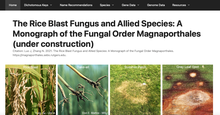When it comes to snow mold, fine fescue is the choice
By Paul Koch, University of Wisconsin – Madison
As the Midwest and Northeast U.S. emerged from their winter snow covers in mid-March, it was clear that snow mold across the region was more damaging than normal. This was especially true in areas that don’t normally experience lots of snow mold such as southern Wisconsin, northern Illinois, New Jersey, and Connecticut.
Genotypic variation in heat tolerance and post-stress recovery for hard fescue
By Cathryn Chapman and Bingru Huang, Rutgers University
Heat stress can limit the growth of cool-season turfgrass species and inhibit important metabolic processes and functions, which can negatively impact the overall aesthetic qualities of the turfgrass canopy. Damages to the turfgrass canopy due to heat stress can be severe and permanent if turfgrass plants experience prolonged temperature conditions that are above the optimal level.
Other fine fescue research at the University of Minnesota: Bee lawns
By Kristine Moncada, University of Minnesota
The Low Input Turf project is not the only fine fescue work we do at the University of Minnesota. Our team does other research that includes: fine fescues in roadside mixes, fine fescue sod, fine fescues in golf course roughs and fine fescue seed production. Yet another project that involves fine fescues is bee lawns.
Two common summer patch pathogens on fine fescues
By Jing Luo and Ning Zhang, Rutgers University
Summer patch is an economically important root disease on turfgrasses used on golf courses, sports fields, and lawns. It causes root, crown and stem rot that develop during periods of summer stress.
Video: Identification Tips for Fine Fescues
By Aaron Patton and Ross Braun, Purdue University
These five fescues are often grouped together and called “fine fescues” because of their similar appearance of fine (narrow or bristle) leaves, which means they are difficult to distinguish from one another visually.






